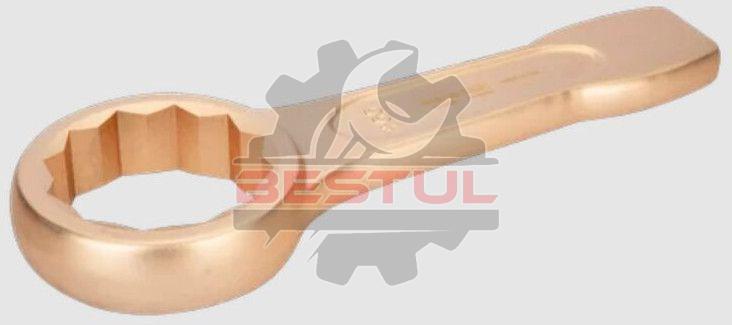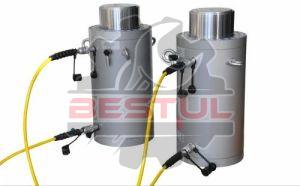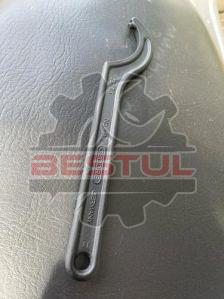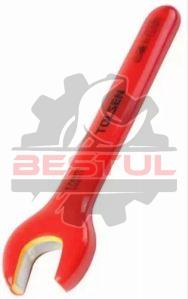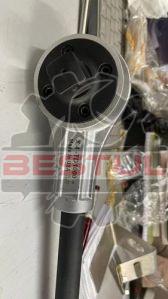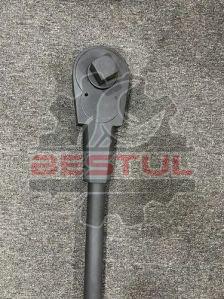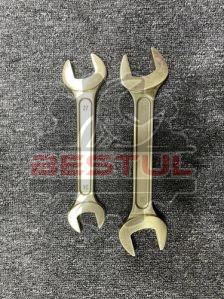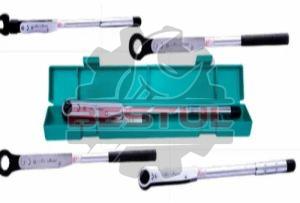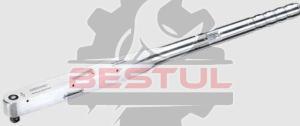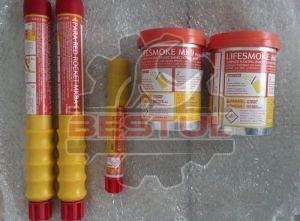| Business Type | Exporter, Supplier |
| Specialities | Non Breakable, High Quality |
| Type | Ring Spanner |
| Material | Cast Iron |
| Click to view more | |
Product Details
A sparkless slogging ring spanner, also known as a spark-resistant slogging wrench, is a specialized tool designed for heavy-duty applications in environments where avoiding sparks is essential, such as in hazardous or explosive atmospheres. The term "slogging" refers to the use of a tool with a striking force, typically used with a hammer or mallet. Here’s a detailed overview of this tool:
Features and Design
-
Spark-Resistant Material:
- Material Composition: Made from non-ferrous materials such as beryllium copper or aluminum bronze, which are selected for their spark-resistant properties. These materials prevent the generation of sparks during use.
- Properties: Designed to minimize the risk of igniting flammable gases, vapors, or dust in hazardous environments.
-
Slogging Ring Design:
- Ring Head: The slogging ring spanner features a ring-shaped head designed to fit over nuts and bolts. The ring is typically a six-point or twelve-point design to provide a secure grip and reduce the risk of rounding off the fastener.
- Slogging Use: The tool is built to withstand the impact of being struck with a hammer or mallet, making it suitable for heavy-duty applications where high torque is required.
-
Construction:
- Strength and Durability: Constructed from robust, high-strength alloys to handle the stresses involved in heavy-duty applications. The tool is designed to be durable and long-lasting.
- Finish: Often treated to resist corrosion and wear, maintaining performance over time in demanding conditions.
-
Comfort and Ergonomics:
- Handle: The handle is designed for durability and may include features to enhance grip and control during use. Although ergonomics are less emphasized in slogging tools compared to precision tools, ensuring a comfortable grip can still be beneficial.
Applications
-
Hazardous Environments:
- Flammable or Explosive Atmospheres: Ideal for use in industries such as oil and gas, mining, and chemical processing, where avoiding sparks is crucial to prevent explosions or fires.
- Safety: Ensures that tools used in potentially dangerous environments do not generate sparks, enhancing overall safety.
-
Heavy-Duty Maintenance and Repair:
- Equipment and Machinery: Used for tasks that require high torque and where traditional wrenches may not be sufficient. The slogging spanner can handle tough, stubborn fasteners.
-
Industrial and Construction Work:
- Worksites: Suitable for construction and industrial applications where heavy-duty tools are needed and where spark prevention is important.
Usage Tips
-
Inspect Before Use: Regularly check the slogging spanner for any signs of damage, such as cracks or wear. Damaged tools should be replaced to ensure safety and effectiveness.
-
Proper Handling: Use the tool according to manufacturer instructions. The spanner is designed to be struck with a hammer or mallet, so use it with appropriate striking tools and techniques.
-
Storage: Store the spanner in a clean, dry environment to prevent corrosion and damage. Avoid exposure to harsh chemicals or extreme temperatures.
-
Cleaning: Clean the spanner with non-abrasive methods. Ensure that the tool is free from debris and contaminants that could affect its performance.
-

